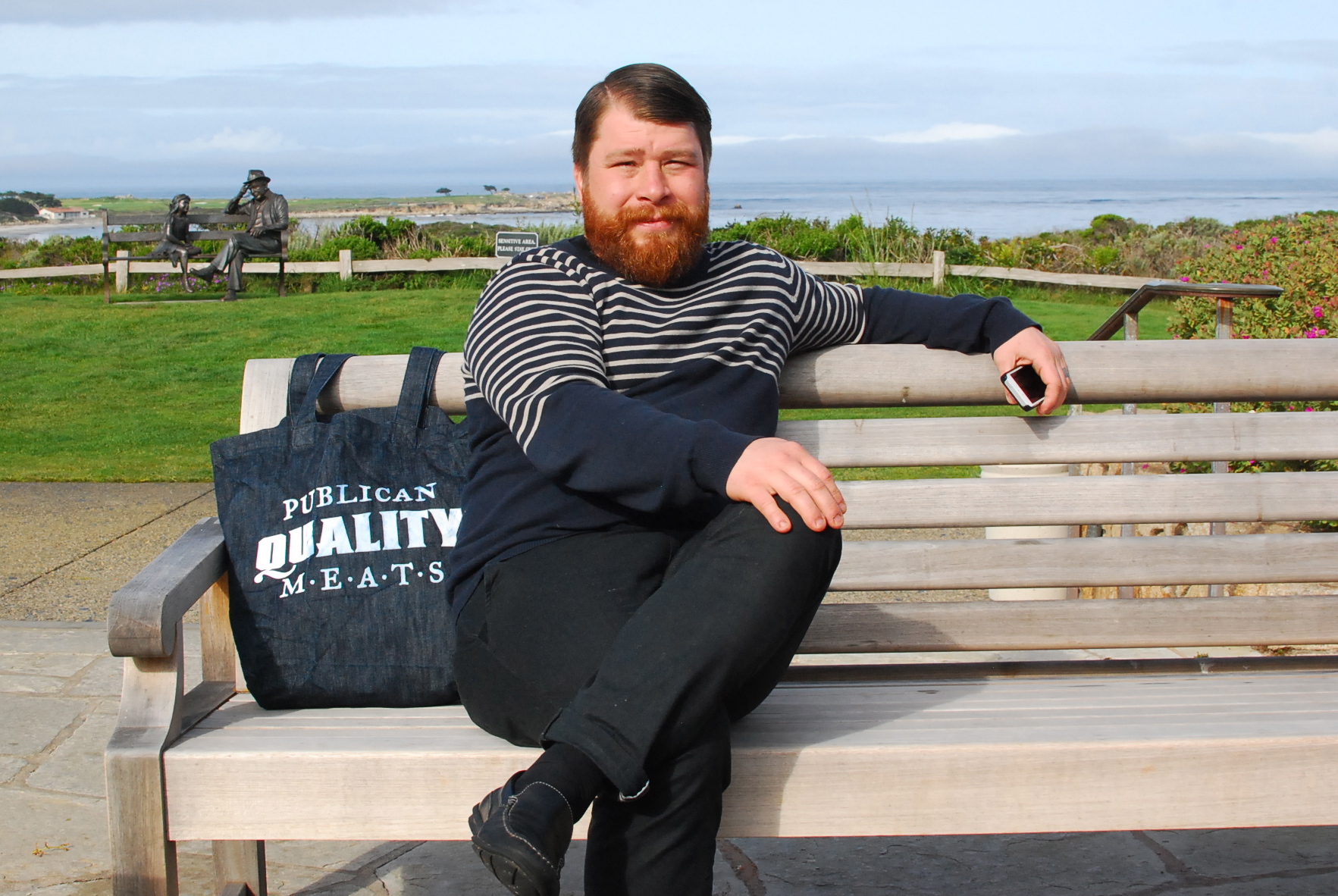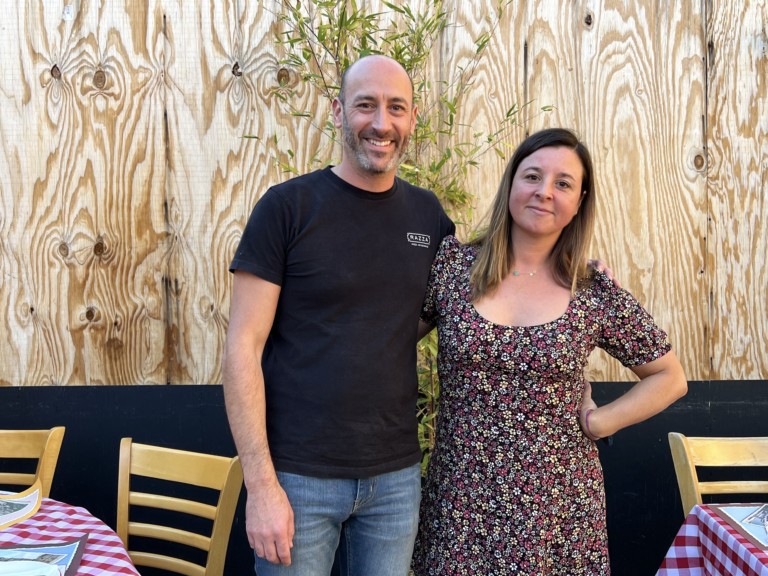Chef Jonathon Sawyer was born in Chicago, grew up in Cleveland, attended the Pennsylvania Institute of Culinary Arts in Pittsburgh, and now owns The Greenhouse Tavern and two branches of Noodlecat with wife Amelia. They also operate Brick & Mortar Pop-ups and Tavern Vinegar Company while serving Sawyer’s Street Frites at Cleveland Browns Stadium and SeeSaw Pretzel Shoppe at Quicken Loans Arena. The couple’s also planning to open a regional northern Italian restaurant called Trentina. Regardless, they strive to follow local, organic and humane business practices. I met Jonathon Sawyer on April 5 at Pebble Beach Food & Wine, and he shared insights into his background and approach.
Was it a given that you would become a chef, or did you consider other careers?
I started cooking when I was 13 years old, just to make money, be a teenager, buy a car. I enjoy math and I tested really well, and my brothers were engineers, and I thought that’s what I was supposed to do, so I went to the private University of Dayton, studied engineering for two years and sort of had a moment there where I was working in the kitchen, but I was also training with a systems analyst at an industrial engineering firm in Dayton. The two were clearly disparate, and I really wanted to cook, and I really didn’t enjoy this engineering field. I knew it couldn’t be for me, and the chef I was working for – an overbearing, old-fashioned German guy – one day looked at me and said, “You know, Jon, you are not bad at cooking.” “Okay, I think that’s a compliment. He just complimented me.” In my mind, “I’m going to culinary school and I’m going to make a career out of it.” I always loved it. I always enjoyed it for sure, but I never knew until I was in college this is what I was going to do.
Do you feel like engineering helps you at all in cooking?
Yeah, I think so. There’s a lot to be said for systems and efficiencies and organization. Especially when you run more than one restaurant, it’s important that processes make sense. That’s a fun thing about cooking. It’s somewhere in between being an artist, a craftsman and an engineer, is where a chef falls. You need to be good at all three of those.
Is it hard to find a balance with multiple restaurants?
Each one is a learning curve. Whenever I talk to friends of mine, like Mike Simon or [Jonathan] Waxman, or any of these guys, they’re always like, “The first one’s the hardest, and the second one, that’s really the hardest, and the third one, that’s really the hardest.” And I totally agree with those guys. As we’ve gotten bigger, it doesn’t get any easier, for us at least. Maybe it’s self scrutiny or just making sure that we’re kicking it off right, but it’s a learning curve each time.
What do you remember about your very first night in a professional restaurant kitchen?
It was Mario Lohninger at Danube, during culinary school, and back then I think they had three stars. Boulud was kicking ass, and it was just the most fascinating and eye opening experience I ever had. If I hadn’t made my mind up, which I already had at that point, that was totally reaffirming, watching this east-of-Paris Austrian cuisine being executed by a true master. It was pretty awesome, and it made me realize this is what the New York food scene is like.
What does a dish have to be to go on your menu? I imagine that differs in some regards, depending on the restaurant.
Yeah, it differs, but there are certain criteria we stick to. We tend to take the harder route. Scallops aren’t on our menu that often. Neither is pork belly. We tend to stay away from the trends and make sure we’re cutting our own cloth. I guess we make it a little bit more difficult than we could. We source pristinely. We have a purchasing pyramid that we follow that’s local, organic, biodynamic, humane first, and then work our way down after that. Local, sustainable. Local, sustainably minded. And then national, organic. That’s sort of the second part of creating a dish. And then the third part is just experimentation. We don’t change our menus quarterly, or bi-annually or anything like that. Every week, we like to change a dish or two. That way the whole kitchen can put their microscope over top of it and make sure the dish tastes well, has balance, is something we’re all proud of, and something we can execute that week. It also allows us to be on the season, in the season, as opposed to be too far behind or ahead. We’re literally pulling stuff out of the soil and saying, “Alright, it’s ready to go.”
What was the most recent dish that you developed, and what was your inspiration and approach?









Blog Comments
kornman
May 22, 2013 at 8:11 PM
why do u talk to chefs what about line cooks , ya know guys n girls that cook for 150 people in 10 minuets
Joshua Lurie
May 23, 2013 at 8:01 AM
kornman, the efforts of line cooks is important, but I’m also trying to drive traffic to Food GPS, so recognizable names works best for that. Also, plenty of line cooks are working to get to where people like Jonathon Sawyer are at with their careers, so hopefully interviews like this, with industry leaders, will help inspire them.